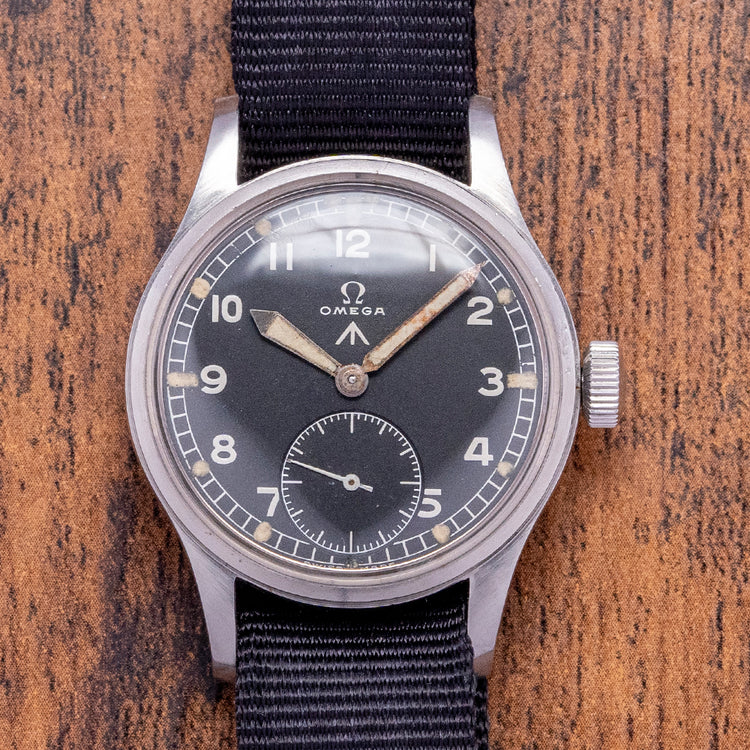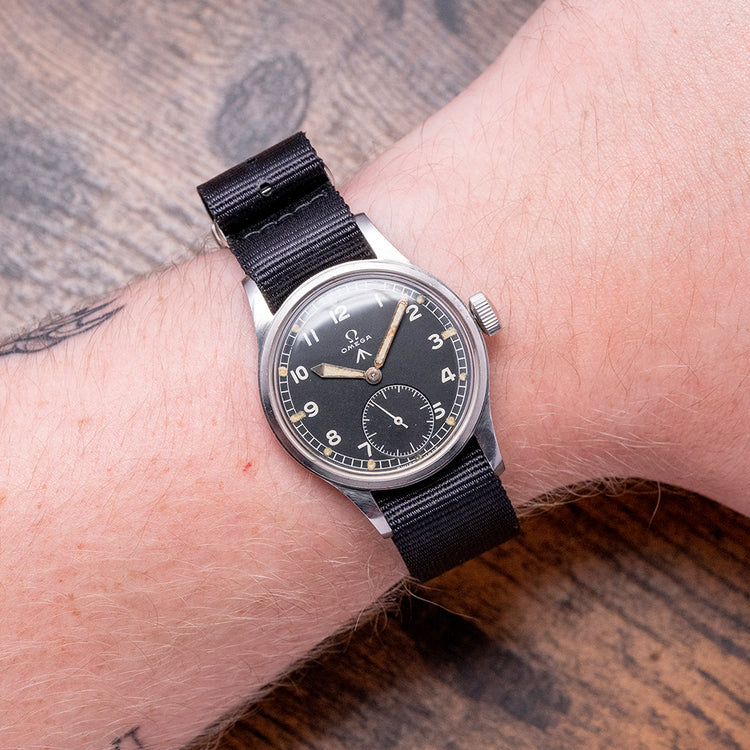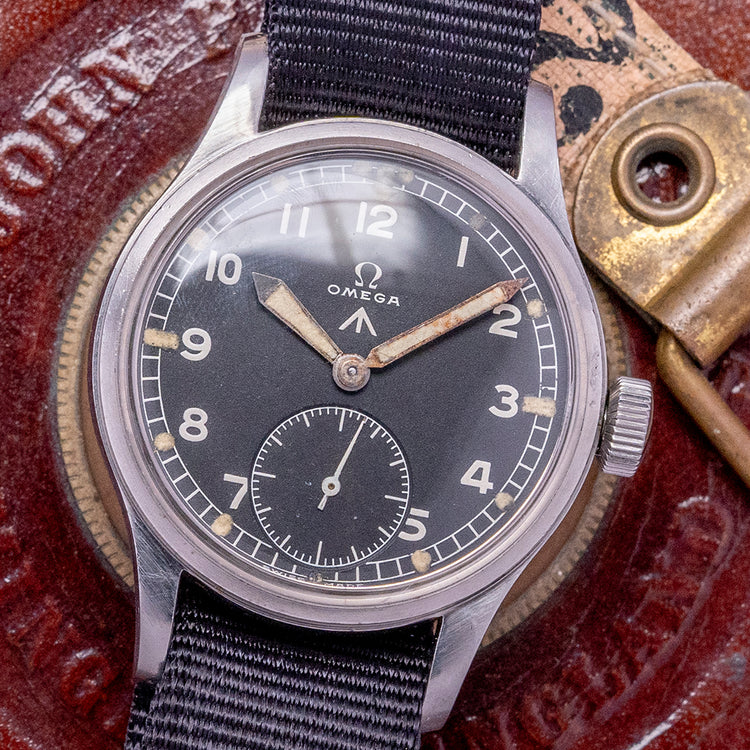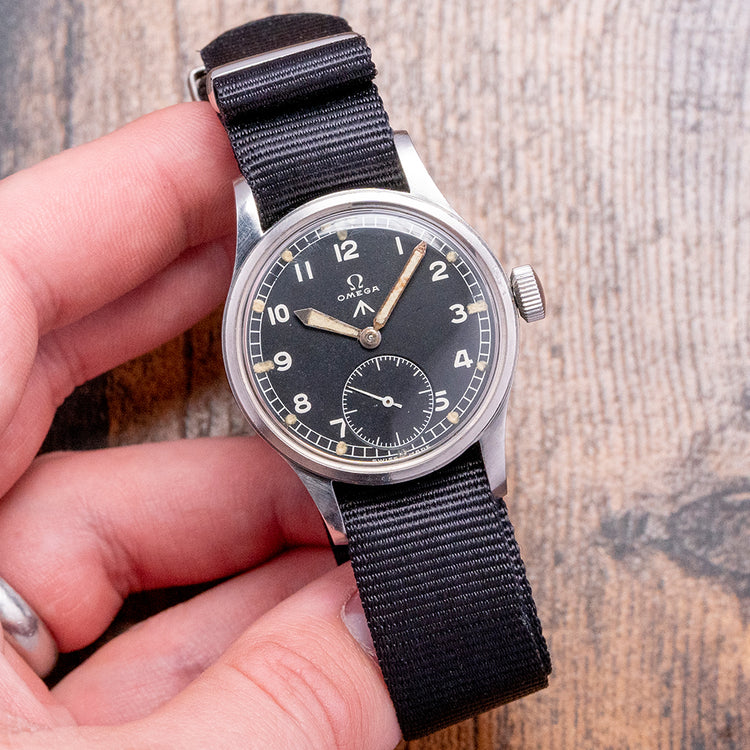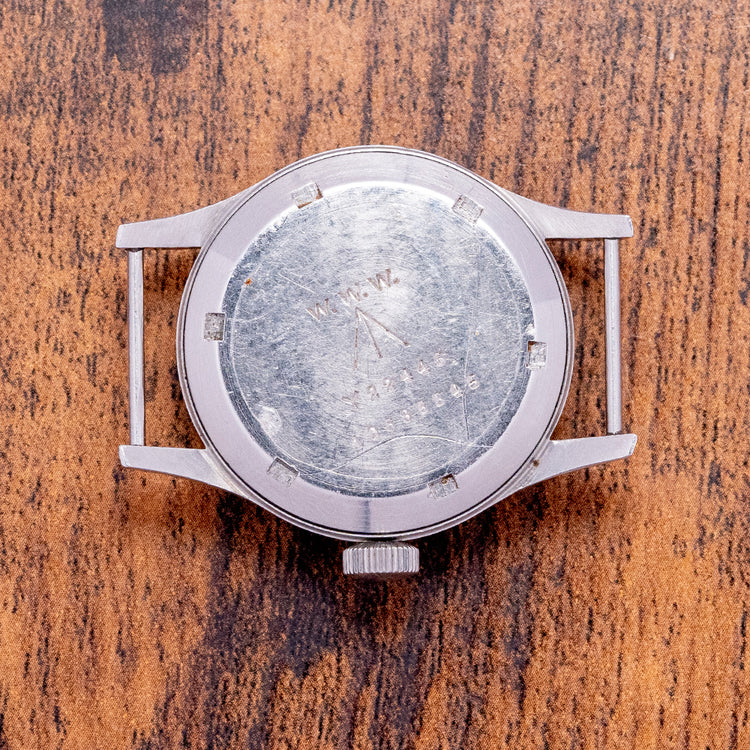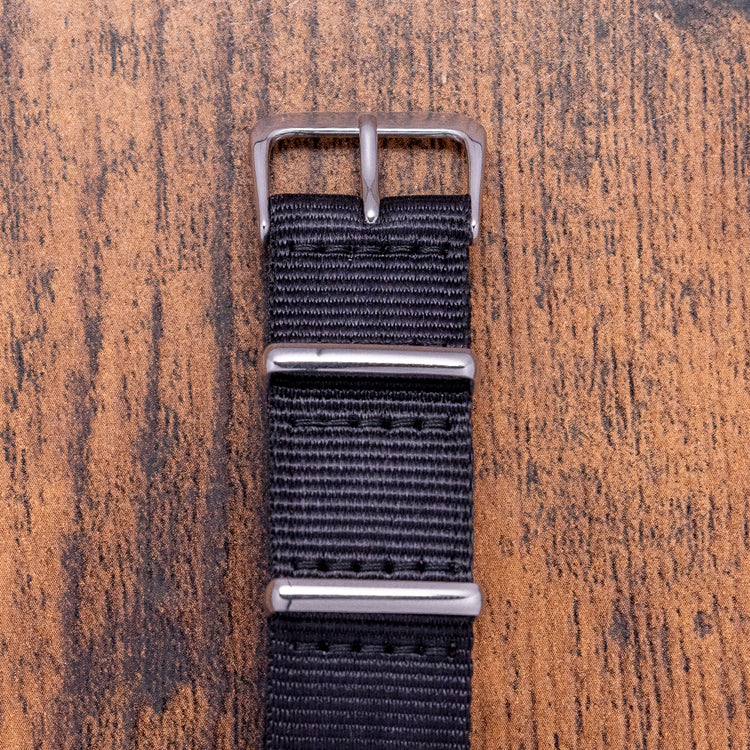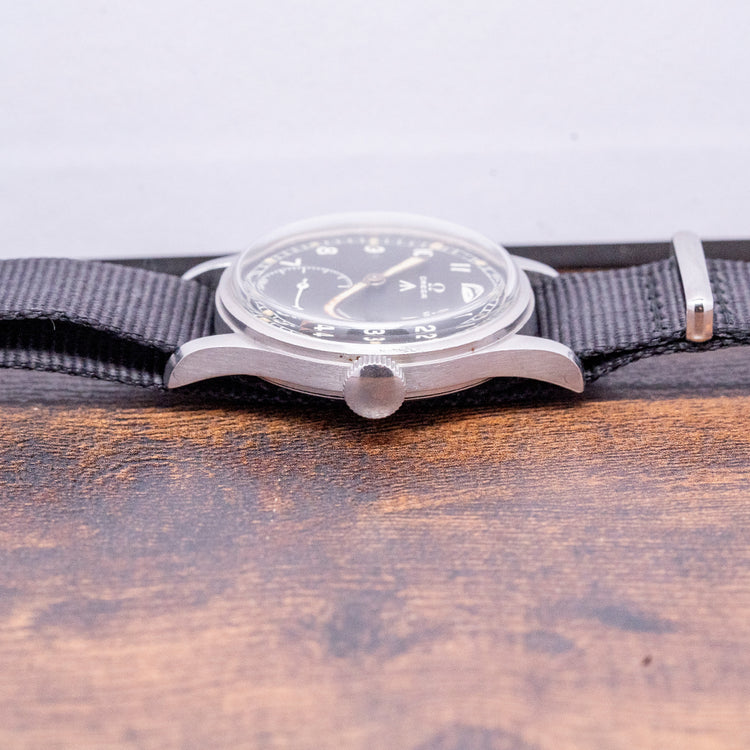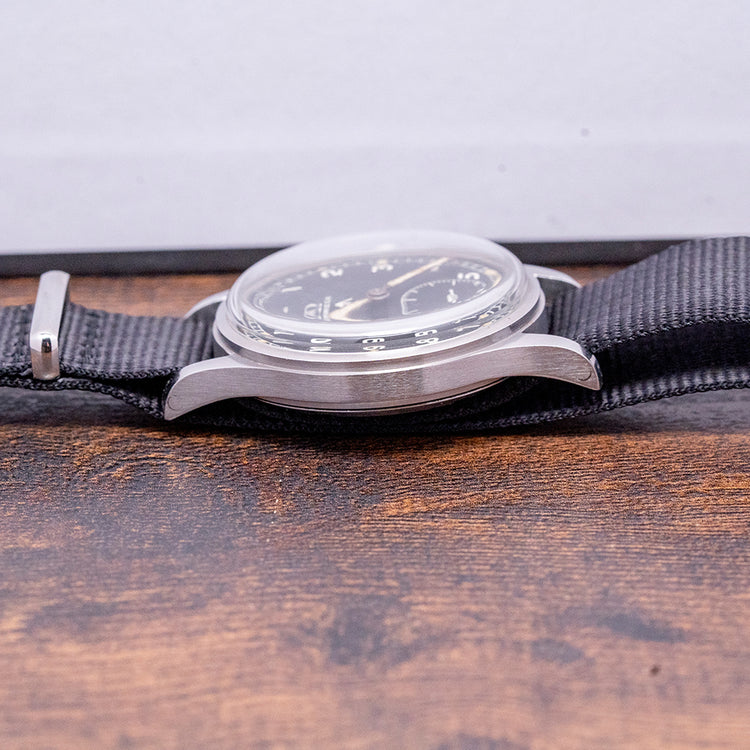More Information
Description
More
Less
Here we have a 1944 Omega WWW Dirty Dozen 35mm Cal. 30T2 Military Watch. As a military-issue watch, it was part of the 12 brands: Buren, Cyma, Eterna, Grana, Jaeger-LeCoultre, Lemania, Longines, IWC, Omega, Record, Timor, and Vertex commissioned by the military during WWII. The 35mm stainless steel round case comfortably fits on your wrist thanks to tapered lugs, fixed spring bars, a 45mm lug-to-lug length, and an 11.5mm case thickness. A smooth bezel holds a domed crystal above a black dial. An outer minute rail track surrounds Arabic numerals coated in radium luminance, marking the hours, and elegant hands filled with radium luminance sit above a sub-second at 6 o’clock. At 12 o’clock, we have the Omega motif and the Broad Arrow (pheon), the mark indicating British Government Issue property. On the reverse, a screw-down case back with W.W.W. Y22446 10259515 / 10686645 engraved. WWW stands for Watch, Wrist, Waterproof, and the Broad Arrow (pheon), the mark indicating British Government Issue property. Inside a manually wound Omega Cal. 30T2, a Swiss 15 jewel movement beating at a leisurely 18,000 beats per hour and is highly regarded by collectors and industry for its reliability and accuracy, the Cal. 30 series of movements was first produced in 1939 until 1963. The watch comes paired with an 18mm NATO strap and pin buckle.
Points of Mention
More
Less
Personal Note
More
Less
Specification
More
Less
Movement : Manually Wound Omega Cal. 30T2
Age : Circa. 1944
Year : 1944
Case Size : 35mm
Case Thickness : 11.5mm
Lug to Lug : 45mm
Lugs : 18mm
Condition : Pre-Owned
Box and Papers : None
Case Material : Stainless Steel
Warranty : 12-Months NON-Waterproof Warranty
The wrist model's wrist size is 7inch
About Omega
More
Less
Description
Here we have a 1944 Omega WWW Dirty Dozen 35mm Cal. 30T2 Military Watch. As a military-issue watch, it was part of the 12 brands: Buren, Cyma, Eterna, Grana, Jaeger-LeCoultre, Lemania, Longines, IWC, Omega, Record, Timor, and Vertex commissioned by the military during WWII. The 35mm stainless steel round case comfortably fits on your wrist thanks to tapered lugs, fixed spring bars, a 45mm lug-to-lug length, and an 11.5mm case thickness. A smooth bezel holds a domed crystal above a black dial. An outer minute rail track surrounds Arabic numerals coated in radium luminance, marking the hours, and elegant hands filled with radium luminance sit above a sub-second at 6 o’clock. At 12 o’clock, we have the Omega motif and the Broad Arrow (pheon), the mark indicating British Government Issue property. On the reverse, a screw-down case back with W.W.W. Y22446 10259515 / 10686645 engraved. WWW stands for Watch, Wrist, Waterproof, and the Broad Arrow (pheon), the mark indicating British Government Issue property. Inside a manually wound Omega Cal. 30T2, a Swiss 15 jewel movement beating at a leisurely 18,000 beats per hour and is highly regarded by collectors and industry for its reliability and accuracy, the Cal. 30 series of movements was first produced in 1939 until 1963. The watch comes paired with an 18mm NATO strap and pin buckle.
Points of Mention
Personal Note
Specification
The Brand
Enquire or Book an Appointment
Would you like to discover further details about this watch, or perhaps arrange an appointment to view and try it on? Complete this form and a member of our team will get back to you shortly.
You May Also Like




















